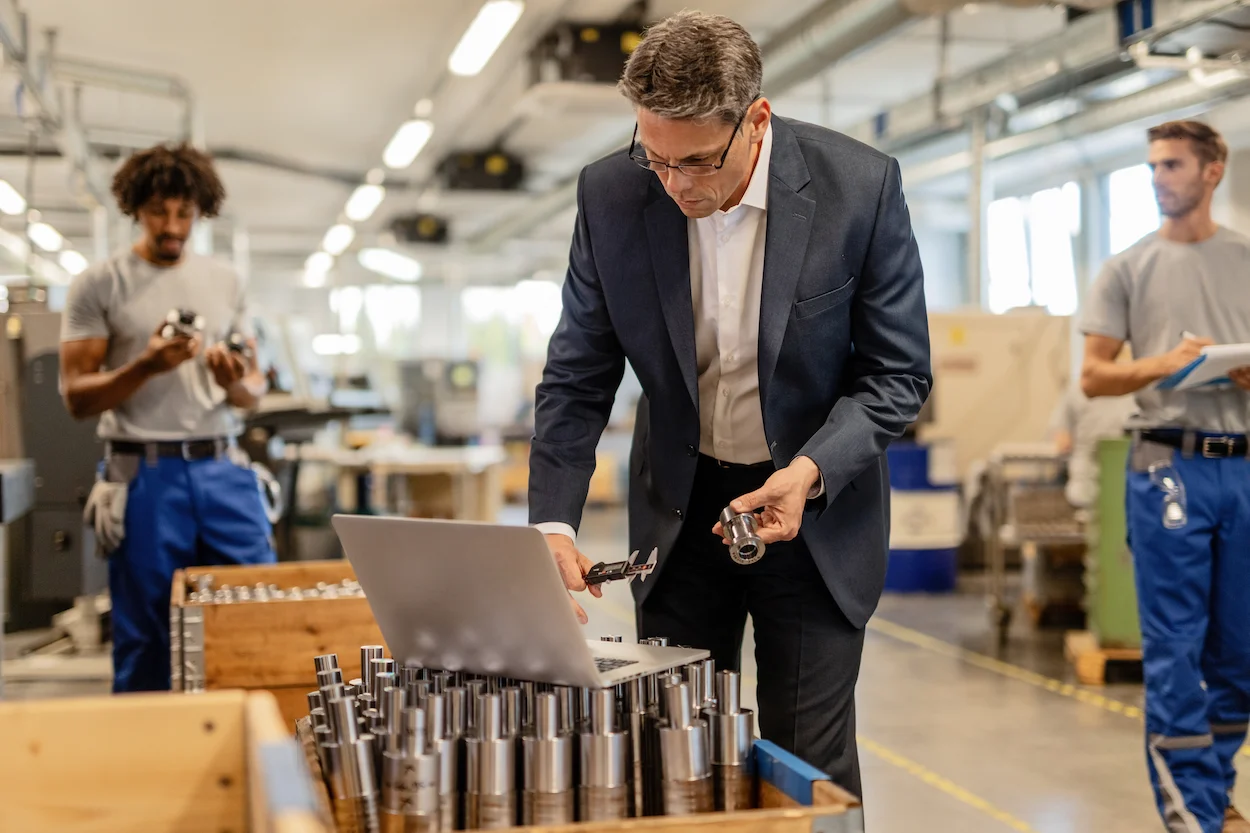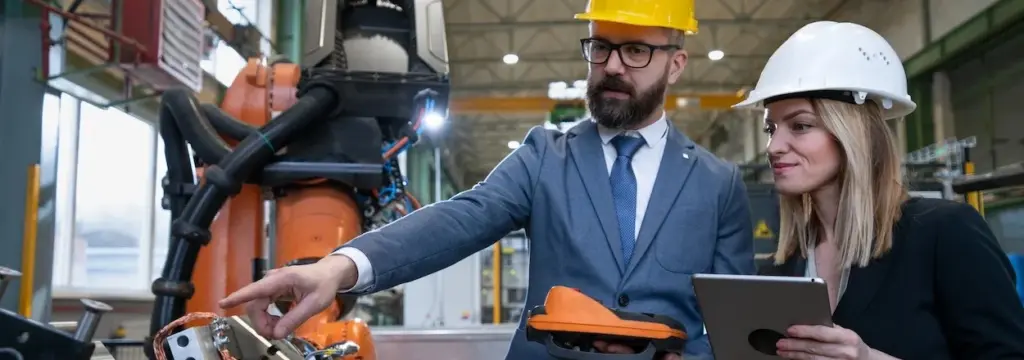Predictive maintenance with AI: the new boost for industrial planning

Predictive maintenance with AI (Artificial Intelligence) has become one of the most effective strategies for improving operational efficiency and the reliability of production processes. In an increasingly digitalised industrial environment, the ability to anticipate failures before they occur is a clear competitive advantage: it cuts unplanned stoppages, optimises resource use and keeps production flowing.
In recent years, the application of artificial intelligence and machine learning has completely changed how companies manage their assets. It’s no longer about fixing things when they break or intervening to a fixed calendar, but acting on data, patterns and probabilities. This shift doesn’t just affect maintenance; it has direct implications for production planning, capacity management and, ultimately, the overall profitability of the supply chain.
From reactive to predictive maintenance: an AI-driven transformation
For decades, industrial maintenance strategies focused on responding after failures occurred or preventing them through scheduled routines. However, these approaches fall short of today’s demands on production plants, where every minute of downtime translates into significant losses.
Predictive maintenance has emerged as a natural evolution driven by digitalisation and advanced analytics. Thanks to sensorised equipment and large-scale data processing, companies can now monitor asset health in real time and anticipate when a failure is likely. In this new paradigm, artificial intelligence acts as the brain that detects anomalous behaviour and recommends the right intervention before a breakdown happens.
Limits of traditional maintenance in production environments
Corrective maintenance, fixing after failure, brings high indirect costs: lost output, planning disruptions, material waste and extra wear on other equipment. Preventive maintenance, timed interventions, does reduce the risk of failure, but it also means replacing components that are still serviceable and tying up unnecessary resources.
Both methods share a common limitation: they rely on generic estimates rather than real data on asset condition. In complex industrial settings, where operating conditions constantly change, this approach is inefficient and poorly aligned with supply-chain optimisation goals.
Preventive vs predictive maintenance: from the calendar to the data
The leap to predictive maintenance lies in moving from time-based logic to condition-based logic. Sensors tracking vibration, temperature, pressure, noise or power draw capture data that reflects the equipment’s behaviour at every moment. Machine-learning algorithms then process that data to detect anomalous patterns or deviations from normal operation.
Analysing large volumes of information enables precise estimation of the remaining useful life of each component and identification of the optimum time to intervene. Maintenance decisions stop being calendar-driven and start being based on empirical evidence. Besides improving reliability, this brings huge flexibility to planning, as interventions are scheduled only when they’re genuinely needed.

How artificial intelligence anticipates failures and maximises uptime
Artificial intelligence is what turns predictive maintenance into a strategic tool on the shop floor. Its ability to process vast data streams in real time, and learn continuously, allows it to spot signals imperceptible to the human eye.
What’s more, AI doesn’t just flag potential faults; it also assesses failure probability, prioritises risks and proposes action plans. Predictive maintenance therefore stops being an isolated technical function and becomes a lever that directly influences operational availability, capacity planning and the plant’s overall efficiency.
Machine learning applied to industrial maintenance
Machine learning enables systems to learn from accumulated experience. Every time an asset fails or is repaired, the model analyses which variables preceded the event and how indicators evolved. With that information, it refines its future predictions, steadily increasing accuracy.
Supervised and unsupervised learning models, along with neural networks, are used to uncover correlations between variables that appear unrelated. For example, a slight rise in vibration combined with a small drop in pressure can point to a bearing failure weeks in advance. This kind of insight would be impossible with human inspections or periodic checks alone.
Early detection of failure patterns and remaining useful life
One of the major achievements of AI-driven predictive maintenance is estimating a component’s remaining useful life. By analysing sensor signals, the system builds degradation models that predict when failure probability will exceed an acceptable threshold.
With that insight, replacements can be planned ahead of time, avoiding both unexpected breakdowns and premature swaps. The result is lower maintenance cost, smarter use of spares and higher operational availability.
Automatic scheduling of interventions to cut unplanned downtime
Automation is the natural next step. AI algorithms can not only detect failures but also raise work orders automatically, allocate resources and align interventions with the production plan.
For instance, if the system detects an anomaly on a hydraulic press that will require a stop within three days, planning can be adjusted so the intervention coincides with a shift change or a lower-priority job. In this way, AI helps minimise downtime, improve Overall Equipment Effectiveness (OEE) and increase the reliability of the production plan.
Integrating predictive maintenance with finite and infinite planning
The real value of predictive maintenance doesn’t lie only in technical accuracy but in integration with planning. Outputs from AI models can feed directly into finite or infinite capacity planning systems, allowing automatic adjustment of work orders and master plans.
In this setup, planning stops relying on static assumptions and is driven by dynamic, predictive information. That ensures production decisions align with the true condition of the equipment, reducing the risk of missed commitments and improving delivery reliability.
How AI connects maintenance with capacity planning
In finite-capacity systems, where resource constraints are modelled, predictive maintenance provides immediate visibility of asset availability. AI tells the planner when a machine will need attention, so the system can redistribute workload before a stop occurs.
In infinite-capacity environments, predictive data helps tune standard times and theoretical capacities, bringing planning closer to operational reality. In both cases, the effect is the same: tighter alignment between plan and execution.
Dynamic rescheduling when faults are detected or risks arise
When a predictive system flags a potential failure, AI can trigger an automatic rescheduling process. That may involve reassigning tasks, changing production sequences and updating delivery forecasts in real time.
This capability means planners always have an up-to-date scenario, avoiding bottlenecks and safeguarding production commitments. The integration is especially valuable in industries with critical lines or highly variable demand.
Direct impact on sequencing and on-time, in-full delivery
The combination of predictive maintenance and planning intelligence directly boosts productivity. By preventing unplanned stoppages, you cut idle time and improve sequence efficiency. And by anticipating interventions, planners can set delivery dates more accurately, improving OTIF (On Time In Full).
In short, AI turns planning into a living, adaptable process, where maintenance reliability translates into production reliability.

Operational and strategic benefits of predictive maintenance across the supply chain
Adopting an AI-based predictive maintenance approach doesn’t just improve plant productivity; it has a direct knock-on effect across the supply chain. As asset reliability rises, companies can plan with greater confidence, trim logistics costs and respond faster to demand swings.
Predictive maintenance also strengthens strategic decision-making by giving visibility over asset life cycles and site performance, helping prioritise investment and optimise resource management.
Lower costs and higher availability
Spotting failures before they happen avoids emergency repairs, reduces spend on spares and minimises downtime. Better equipment availability translates into greater productive capacity and improved utilisation of existing facilities, without expanding infrastructure.
Greater reliability in planning and OTIF delivery
Predictive maintenance stabilises the planning system. Orders run to schedule and delivery dates are met more consistently. That reliability enhances customer relationships and strengthens competitiveness in a volatile market.
Sustainability and energy efficiency: the hidden upside of smarter maintenance
Optimised maintenance also supports sustainability. Well-tuned, well-maintained equipment uses less energy, generates less waste and lasts longer. That helps meet ESG objectives and reduces the operational carbon footprint.
Artificial intelligence and predictive planning: the future of industrial operations
The convergence of predictive maintenance and planning intelligence is creating a new paradigm: predictive planning. Here, decisions are based not only on what happened in the past, but on what is likely to happen next.
By combining AI, IoT and advanced planning systems (APS), companies can monitor equipment performance in real time, anticipate capacity constraints and continuously adjust the production plan.
From historical planning to real-time predictive control
Traditional planning rests on historical data and static assumptions. Predictive planning, by contrast, uses real-time information from sensors, maintenance systems and performance indicators. Decisions are evidence-based rather than speculative, reducing uncertainty and increasing operational agility.
The synergy between AI, IoT and advanced planning systems (APS)
Integration of these three elements underpins the smart factory. IoT sensors capture machine data, artificial intelligence analyses it, and the planning system uses it to adjust orders in real time. This ecosystem creates a continuous loop of learning and improvement that boosts productivity and supply-chain resilience.
Use cases in manufacturing, chemicals and food & drink
AI-driven predictive maintenance is already a reality across multiple sectors. In manufacturing, it maximises uptime on critical lines and reduces maintenance costs. In chemicals and pharmaceuticals, it enhances traceability and supports compliance. In food and drink, it helps maintain product quality and safety by avoiding breaks in the cold chain or packaging process disruptions.
Towards smarter, more resilient industrial planning
AI-enabled predictive maintenance is a genuine step change in operations management. It doesn’t replace planning, it enhances it. Integrated with finite and infinite planning systems, it converts technical insight into strategic decisions, enabling full synchronisation between maintenance, production and operations.
With AI, companies can anticipate failures, reduce costs and keep plans stable even when the unexpected happens. In a world where efficiency, agility and sustainability are essential, predictive maintenance becomes a key lever for building a smarter, more resilient and future-ready supply chain.
At Imperia, we offer a solution that uses advanced machine-learning and AI algorithms to optimise our clients’ supply chains. If you’d like to see how we can help you improve your processes, book a free consultation with our experts.

Subscribe to our newsletter and transform your management!
Receive updates and valuable resources that will help you optimise your purchasing and procurement process.